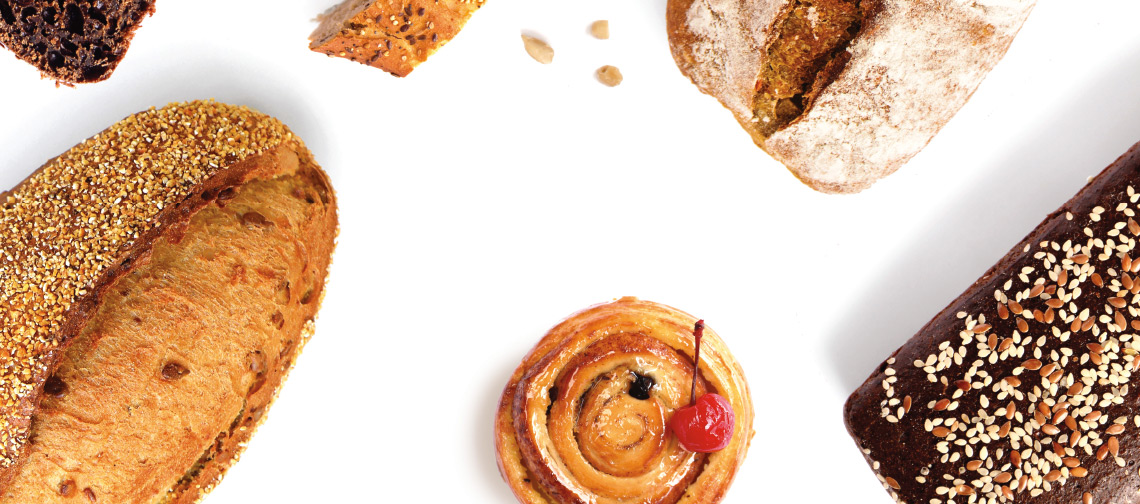This article will examine the Halachic prohibition against making or eating dairy bread. We will address this issue in detail, providing the criteria for when the prohibition does and doesn’t apply. We will discuss some of the common dairy breads in use today and when and why they would be permissible.
1. General Prohibition
The Gemara (Pesachim 36a) records the following Baraisa: “One may not knead dough with milk, and if he did, the bread is forbidden to be eaten to prevent sin.” The concern is that the bread might be eaten together with meat.
The Gemara goes on to quote Ravina who offers the following exception to this prohibition: “If it is baked “k’ein turah” it is permissible.”
What is the meaning of the phrase “k’ein turah”? The Rishonim offer two differing explanations. Rashi translates it to mean “like the eye of an ox”, which is an example of something that is small. He explains that one may bake a small amount of dairy bread because it will be consumed right away and it does not remain in the house long enough for one to forget that it was kneaded with milk. In contrast, the Rif (Chullin 38a) and the Rambam (Hilchot Maachalot Asurot 9:22) translate the phrase “k’ein turah” to mean “similar to an ox.” This means that one shapes the bread in an unusual form, such as like an ox, to indicate that the bread is not pareve.
The Shulchan Oruch (Yoreh Deah 97:1) rules leniently in accordance with both interpretations. Therefore, one may bake dairy bread if either condition is met – it must either be small or unusually shaped.
“One may not knead dough with milk, lest one come to eat it with meat. If one did knead it that way, the whole loaf is prohibited, even to eat alone. If it was a small quantity that can be eaten in one sitting, or its shape is unusual so it will be recognizable that it shouldn’t be eaten with meat, it is permitted. One may not bake bread in an oven that was smeared with fat, and if one did, the rules are as for a dough kneaded with milk.
Rema: Thus we are accustomed to knead bread with milk for Shavuot, and also fat for the honor of the Sabbath, because all of this is considered a small amount. Also, its shape is distinct from other bread.”
2. Definition of “Small Amount”
It is evident that the Mechaber and the Rema disagree as to the definition of “small amount”. The Mechaber defines it as the amount eaten in one sitting. It follows that anything more would be prohibited. The Rema, however, considers what is prepared for Shabbos or Shavuos to be a “small amount”. His definition of small is an amount that would be eaten within one day (24 hours). Anything less is permitted.
3. Definition of “Unusual Shape”
There is a disagreement among the poskim as to how unusual the shape must be in order to permit the dairy bread.
Some say the point of the change is just to remind the person who bought or baked the bread that it is dairy. Therefore, even a slight change that would serve to jolt his memory is sufficient.
Others, however, argue that the shape must be so unusual that anyone coming across the bread would wonder about its uniqueness, causing them to inquire about it and ultimately find out that it is dairy.
The consensus among the contemporary Poskim is to follow the second, more stringent opinion.
4. Making a Change After it was Baked
There is an argument among the poskim about whether making a change after the bread was baked is sufficient to make the bread permissible.
R’ Yonoson Eibshitz in Kreiti Upleiti maintains that it is. Accordingly, if one baked regular dairy bread in a large enough quantity to be prohibited, it can be broken up into small pieces or have its shape changed and it would become permitted.
The Chavos Da’as, however, maintains that it would still be prohibited. Once the bread was baked in a manner that would be forbidden, it can never be made permissible.
The Pischei Teshuva and Pri Megadim side with the Chavos Da’as.
5. Donuts, Croissants, Cookies & Cakes
Any pastry or Danish that is filled with cheese is permissible, because the cheese is distinct, so there is no concern one would mistakenly eat it with meat. The prohibition is only when the milk is kneaded into the dough itself.
If a pastry or Danish is made with milk or butter in such a way that it’s impossible to know that it is dairy by looking at it, its status would depend on whether it is usual to eat that pastry together with meat.
The Pischei Teshuva quotes the Maharit as saying that baked goods that are sweet and not typically eaten with meat are allowed to be made with milk. Accordingly, most pastries or Danishes are permitted, even when made with milk or butter. Only those that would typically be eaten together with meat are prohibited.
The Sheilas Ya’avetz does bring an opinion that forbids even these pastries, however the consensus amongst today’s major kashrus agencies is to accept the lenient opinion of the Maharit.
6. Labeling and Signs
There have been poskim in the past that felt that proper signage or labeling was enough to permit dairy bread. Their reasoning was simple: since the packaging clearly states the product is dairy, there is no concern of it being eaten with meat.
However, it is the consensus of today’s poskim1 , that labeling and signage are not sufficient indicators. The bread can only be permitted if there is something unique and different in the shape of the bread itself as mentioned above. ~
1. Opinion of the Chovos Daas as quoted by the Pischei Teshuvah mentioned above.







